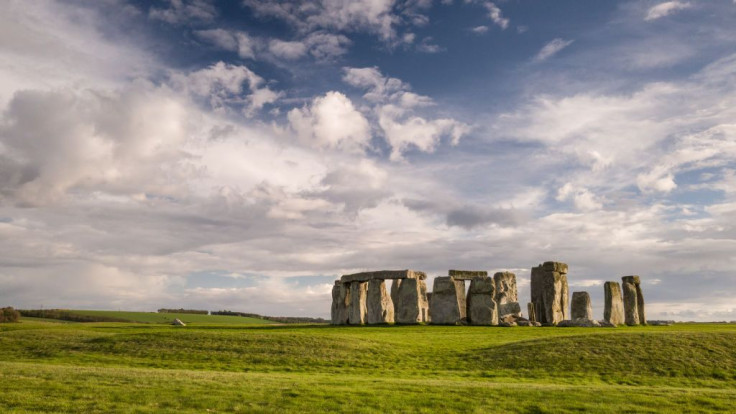Who Is Buried At Stonehenge? Mystery Partially Solved Using Cremated Bones

Being one of the most iconic prehistoric monuments in the United Kingdom, the Stonehenge draws a lot of tourists and archaeologists from different parts of the world.
The landmark, which came to be somewhere between 3000 and 2000BC, is surrounded by ancient burial mounds — a fact that led many to believe it was used for burials right from the day of construction. However, despite years of research, there is hardly any evidence to predict who actually built the distinct rock assemblage or who is buried there.
Though the exact answer to the question still remains unknown, an international team of scientists, including a group from Oxford University, recently found some of the people buried at the site were also the ones who brought the stones used in the construction of the monument.
Stonehenge is made from a variety of stones, and most of those rocks, popularly dubbed as bluestones, are believed to have been brought from Preseli Hills, about 150 miles west of Wales. The theory about the origin of rocks has been around for a long time, but when the research team analyzed the bones buried at the site, they witnessed a unique, previously unseen connection with these rocks.
“Some of the people's remains showed strontium isotope signals consistent with west Wales, the source of the bluestones that are now being seen as marking the earliest monumental phase of the site,” Rick Schulting, the lead author on the research, said in a statement.
Though these remains were excavated from pits near the inner circumference and ditch around Stonehenge nearly a century ago and were already cremated, the research team went ahead with the analysis work.
They took skull bone specimens belonging to 25 individuals buried there and employed sophisticated analytical techniques, including radio-carbon dating, to determine isotopic signatures sealed in them. This provided an insight into where these people lived during the last decade of their lives.
According to the results, at least 10 of the 25 individuals buried at Stonehenge lived nowhere near the site. Their strontium isotope ratios were more similar to those living in western Britain, which also includes the source of the bluestones — West Wales.
The work indicates the origin of these people and suggests that during the earliest phases of Stonehenge’s construction, not just rocks but a bunch of people also moved towards the prehistoric site in Wessex.
“The powerful combination of stable isotopes and spatial technology gives us a new insight into the communities who built Stonehenge,” John Pouncet, another author of the researcher, added. “The cremated remains from the enigmatic Aubrey Holes and updated mapping of the biosphere suggest that people from the Preseli Mountains not only supplied the bluestones used to build the stone circle, but moved with the stones and were buried there too.”
The study titled, "Strontium isotope analyses on cremated human remains from Stonehenge support links with west Wales," was published in the journal Scientific Reports.
© Copyright IBTimes 2024. All rights reserved.





















